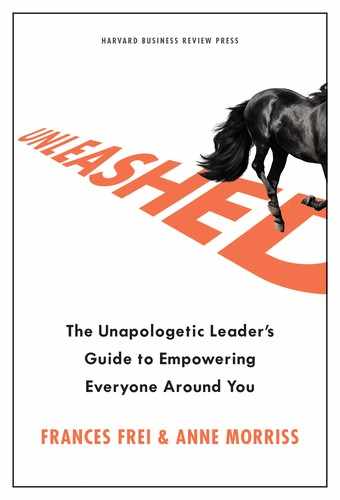a. This is the first of a number of awkward sports analogies.
b. She once woke up her siblings, wild-eyed and sleepwalking, with shouts of “the British are coming!”
c. To our international readers: We are aware of our flagrant abuse of the words “super” and “awesome.” We invite you to replace these words with your preferred terms at any point in the book.
d. Anne was not the first cross-dressed minuteman. Prudence Cummings Wright famously fought in the battle of Lexington and Concord, leading a small armed militia of self-described “minutewomen” disguised as men.
a. At the authors’ discretion, some details have been changed to maintain voice and make storytelling less cumbersome. In particular, despite our standard use of “we,” the authors were not physically together at all times.
b. One of us only watches television with a remote control at the ready, which she uses to “speed up” scenes that she thinks will be boring, inevitably missing much of the plot. One of us, the one who happens to have the keyboard right now, is made crazy by this behavior.
c. Kalanick retained his board seat and a meaningful share of the company until he gave both up in December 2019.
a. Roman slavery was a harsh, violent existence that was occasionally temporary with a defined path to freedom and even citizenship over time.
a. We disproportionately focus on women and LGBT+ perspectives in this chapter, as stand-ins for differences that are visible and (mostly) invisible. This choice reflects both our space limitations and our particular experience navigating the world as members of these two groups. Needless to say, only some of our advice is transferable to other populations, but we still hope it remains directionally useful, regardless of the type of difference you seek to support. Wherever practical, we broaden the discussion.
b. The name “1844” is a reference to the year that the first black man, Macon Bolling Allen, was admitted to practice law in America.
c. We often encounter anxiety about lowering the bar in order to achieve better diversity optics. This is often a valid fear of the cynicism that can infect a culture when selection becomes politicized in any way. The correction to these concerns is inclusive recruitment processes and rigorous, transparent selection criteria that everyone understands.
d. Software tools such as Blendoor have automated the reduction of hiring bias through functionality that includes anonymization of candidate profiles. Blendoor is now being used by recruiters at Facebook, Google, Twitter, and Airbnb, among other high-influence firms.
e. See histories of the civil rights movements in the United States and South Africa for the compelling case for quotas as a necessary but insufficient response to systematic discrimination.
a. Peter Drucker allegedly once said, “Culture eats strategy for breakfast,” setting up a debate about which of the two is more powerful. In practice, culture usually wins this showdown, but only because strategy is rarely articulated well enough to influence most employees. Whether we like it or not, culture gets to flamboyantly declare its intentions with a constant flow of informal signals and behavioral cues. Meanwhile, strategy often gets stuck inside the minds of a few top lieutenants or buried inside a strategic plan that gets revisited once a year. Honestly, it’s not a fair fight.
a. We find that most people can do this exercise without gathering more data, but it never hurts to have a direct conversation. Ask your stakeholder some variation of “Of all the things I do, which are most important to you?” This conversation can be a powerful signal of your investment, and the dialogue on its own is often meaningful.
b. This lifeline can, of course, be extended by capital providers if they believe that other objectives (e.g., growth) matter more than profitability or that costs will come down over time with better scale economics or other structural changes. We believe that profitability has generally been undervalued as an indicator of organizational health, particularly in early-stage companies.
c. By the way, complicating reality further, your customers can also be a source of labor. The last time you tested your relationship with a loved one by trying to assemble that IKEA shelf together, you were performing a final manufacturing step that trained professionals do in most companies.
d. This is somewhat counterintuitive, so we’ll give you a simple example: Frances took a pay cut to join the Harvard Business School faculty from another institution, which she was more than happy to do because of the nonfinancial rewards of being at HBS, including great colleagues, great students, dynamism of the classroom, and so on. Her wages went down, but her delight increased threefold (conservatively).
a. By this point Uber’s board of directors had begun the process of removing Kalanick as CEO.
b. Kalanick’s original articulation of this value was “meritocracy and toe-stepping,” which he explained in a detailed, fifty-page culture document. The language reflected Kalanick’s conviction that good ideas could come from anywhere in the company, and lower-ranking employees should have cultural license to “step on the toes” of higher-ranking employees in order to be heard.
